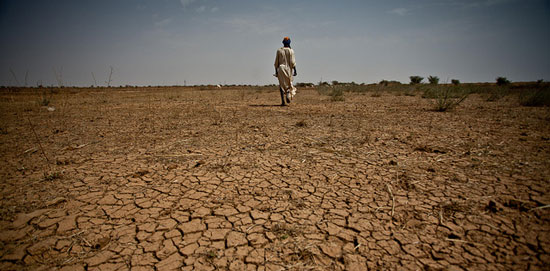
What do you think of when you think about soil? There are radically different ways to answer the question. For some scientists, it’s a subject of investigation – what do soils need to grow which types of plants the best? How can they be managed, improved or damaged? For archaeologists or paleontologists, digging into the soil can reveal human histories and ancient remnants of life. For farmers, it’s something to be nurtured, fed and looked after as much as any plant or animal – and spoiling or losing it can mean ruin. The UN International Year of Soils is focusing attention on it in 2015, pointing to the multiple roles of soils and looking at soil management and protection.
Soil isn’t just stuff. In language it is connected to other fundamental things. In many European languages, soil, earth (and the planet Earth) share a common root. In a solar system populated by Jupiter, Mars and other Roman Gods, our home has an emphatically humble name.
But soil has long provoked mixed emotions. In the Book of Genesis the man is formed from the dust of the ground. When God finds he has eaten the forbidden fruit his first words to the man are to curse the ground, and his punishment is to obtain food from the soil “through painful toil” – until returning to the dust. Cain’s punishment for killing his brother is that the soil will no longer yield its crops. You don’t have to subscribe to the myth to feel the deep cultural association of soil with struggle and hard work.
Soil, earth, land has shaped nations, fed the hungry and provoked wars. The search for fertile land has driven people across deserts and oceans. No wonder, as it can be a gift that keeps on giving – to be nurtured, rested, fed. In this sense, soil is far from a ‘natural’ thing – it’s often enhanced or altered by people. In some places, farmers have spent centuries looking after and changing the soil to their own purposes. Some of these practices are only now being understood in more formal scientific ways, but they have been handed down over generations. For example, ‘dark earths’ have been enriched with carbon in Amazonia since pre-colonial times, and are being found in West Africa as well – and soil scientists are looking at ways to mimic them.
Where soil is degraded or polluted it can be ruined forever, or take years to repair, though many current farming practices seem oblivious to the fact. But land isn’t just something you grow stuff on – it is the ground of hopes, struggles, secret deals and open conflicts. Land may be a commodity or a stock to be traded for some. For others, it’s a livelihood, it’s home. When people are displaced, through war, the demands of the market, or in search of a better life, how do they come to terms with new land and new soil? When land is grabbed or otherwise acquired, what happens to the soil? What do monocultures and intensive farming do to the soil and are the short term benefits worth it? Who are the winners and losers?
2015 may be the ideal time to ask these questions and more, as debates continue about the best ways of feeding a growing population while taking care of the land, and whose priorities matter. Colleagues of mine have called for attention to ‘political agronomy’. It would be a shame if the International Year of Soils did not address the intertwined politics of soil, earth, land and people.
You can find out more about the International Year of Soils on the FAO website. Or check out the Soil Science Society of America’s fun ideas for soil desserts.
Image: Arid soils in Mauritania by Oxfam on Flickr (cc-by-nc-nd)